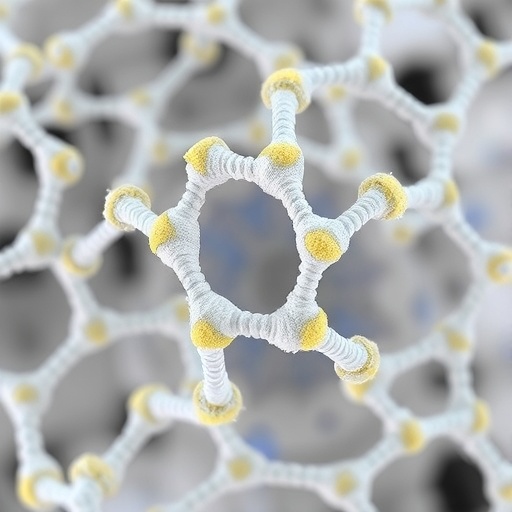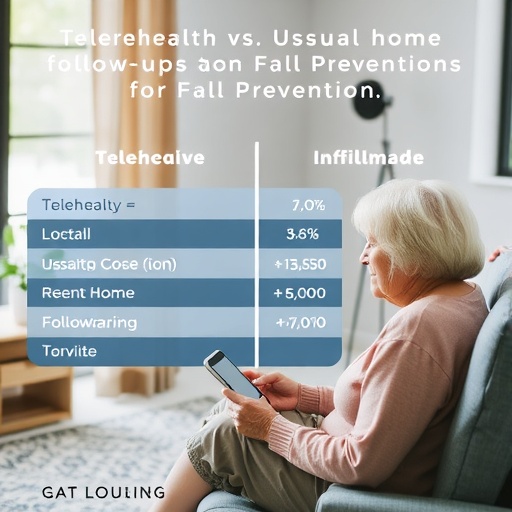
In a groundbreaking advance in cardiovascular research, scientists have uncovered a novel molecular mechanism by which the protein Nexilin (NEXN) exerts a protective effect against vascular calcification, a pathological process linked directly to atherosclerosis, heart failure, and increased mortality. The study, recently published in Nature Communications, has illuminated how NEXN orchestrates the post-translational modification of SERCA2, an essential sarco/endoplasmic reticulum Ca²⁺-ATPase pump, via SUMOylation, thereby enhancing its stabilization and function in vascular smooth muscle cells (VSMCs). This discovery not only demystifies a long-standing puzzle in vascular biology but also opens exciting therapeutic avenues for combating cardiovascular disease, a leading cause of death globally.
Vascular calcification is a hallmark of chronic cardiovascular conditions and contributes to vessel stiffening, impaired vascular compliance, and eventual cardiac dysfunction. Despite decades of research, the molecular underpinnings that govern the progression or suppression of calcification within the arterial wall remain incompletely understood. The revelation that NEXN can protect vessels by modulating calcium handling at a molecular level marks a turning point in this field. By focusing on the interplay between NEXN and SERCA2, the research team has highlighted a delicate balance in calcium homeostasis that, when preserved, can prevent the pathological osteogenic transformation of smooth muscle cells, a key event in vascular calcification.
The sarco/endoplasmic reticulum Ca²⁺-ATPase isoform 2 (SERCA2) is crucial for maintaining intracellular calcium levels by pumping calcium ions from the cytosol into the sarcoplasmic reticulum, enabling proper muscle contraction and relaxation cycles. Dysfunction of SERCA2 has been implicated in various cardiac pathologies, including heart failure. However, its specific role in vascular smooth muscle cells and calcification was less clear until now. The current study elucidates that SERCA2’s activity and stability are tightly controlled by a post-translational modification known as SUMOylation, which involves the covalent attachment of small ubiquitin-related modifiers (SUMO) that can alter protein stability, activity, and interactions.
The researchers demonstrated, through a series of elegant biochemical experiments, that NEXN enhances SERCA2 SUMOylation, resulting in increased protein stability and sustained calcium pump activity. This SUMOylation process prevents SERCA2 from being tagged for degradation via the ubiquitin-proteasome system, thereby maintaining its functional levels within vascular smooth muscle cells. These findings were corroborated by in vitro cell culture studies and in vivo animal models, where the absence or downregulation of NEXN led to reduced SERCA2 SUMOylation, decreased protein levels, and accelerated vascular calcification.
Importantly, this work sheds light on the molecular cascade that connects NEXN’s actin-binding capacity with calcium signaling machinery. NEXN, previously known primarily for its structural role in maintaining cytoskeletal integrity, has now emerged as a critical modulator of intracellular signaling pathways that influence cell fate decisions. Its ability to stabilize SERCA2 through SUMOylation signifies a novel functional axis by which the cytoskeleton may regulate enzyme turnover and signaling in smooth muscle cells, thus safeguarding vascular health.
The pathological sequelae of diminished SERCA2 function in vascular tissues include elevated cytosolic calcium concentrations, which are known to promote osteogenic differentiation and matrix mineralization — the core processes underlying vascular calcification. By maintaining SERCA2 activity, NEXN preserves intracellular calcium homeostasis, preventing the maladaptive phenotypic switch of smooth muscle cells to bone-like cells. This mechanistic insight offers an unprecedented opportunity for targeting the early molecular events precipitating vascular calcification.
Methodologically, the study leveraged advanced proteomics and molecular biology techniques to map the SUMOylation sites on SERCA2 and to characterize the interaction interfaces with NEXN. Through site-directed mutagenesis, they identified key residues critical for post-translational modification and demonstrated that disruption of these sites compromised SERCA2 stability and function. Additionally, the use of novel animal models with conditional knockout of NEXN in vascular smooth muscle provided in vivo evidence of its indispensable role in preventing calcification and preserving vascular elasticity.
Beyond its immediate impact on understanding vascular calcification, this research holds broader implications for cardiovascular therapeutics. SERCA2’s role extends into cardiac muscle biology, suggesting that modulating its SUMOylation could offer benefits for heart failure patients. Moreover, by elucidating the role of NEXN in protein stabilization, new drug design paradigms can be envisioned — ones that stabilize key enzymes through targeted enhancement of their post-translational modifications rather than classical enzyme activation or inhibition.
The translational potential of harnessing NEXN-driven SERCA2 SUMOylation is underscored by its specificity and upstream position in cellular signaling hierarchies. Therapeutics aimed at boosting NEXN expression or mimicking its functional interfaces could offer a novel class of treatments for vascular calcification and associated cardiac morbidities without interfering broadly with calcium signaling, thereby minimizing off-target effects and toxicities that have plagued previous attempts.
This study also invites intriguing questions about the regulation of NEXN itself and whether its expression or activity is affected in disease states. Understanding cellular signals that modulate NEXN could provide further targets for intervention and illuminate how systemic factors such as inflammation, oxidative stress, or metabolic derangements impact vascular health at a molecular level.
Furthermore, the identification of SERCA2 SUMOylation as a critical regulatory node has significant ramifications for other calcium-dependent tissues. Given the ubiquitous role of SERCA pumps in muscle and non-muscle cells alike, this modification may represent a conserved mechanism of proteostasis and function that is relevant in diverse pathologies, including skeletal muscle disorders, neurodegeneration, and metabolic diseases.
The cooperative relationship between NEXN and SERCA2 also highlights the nuanced interplay between the cytoskeleton and calcium signaling beyond mere structural support. By stabilizing key calcium pumps, cytoskeletal proteins like NEXN actively participate in signal transduction, cell fate determination, and stress responses, challenging existing paradigms in cell biology.
In summary, this research marks a significant stride in cardiovascular science by unveiling how NEXN suppresses vascular calcification through promoting SERCA2 SUMOylation and stabilization. This discovery not only advances our mechanistic understanding of vascular biology but also offers a promising molecular target for therapeutic intervention. As vascular calcification remains a formidable clinical challenge with limited treatment options, insights from this study could catalyze the development of novel drugs or gene-therapy strategies designed to preserve vascular health and prevent cardiovascular mortality.
As we continue to explore the complex regulatory networks governing vascular function, the role of post-translational modifications such as SUMOylation will undoubtedly emerge as crucial modulators of protein homeostasis and activity. The crosstalk between cytoskeletal components and calcium pumps exemplified here provides a template for future research aimed at unraveling cellular resilience against pathological insults, potentially revolutionizing how we approach cardiovascular disease prevention and therapy.
This landmark study represents a compelling paradigm shift, encouraging a deeper investigation into the molecular choreography that maintains vascular integrity. The translation of these findings into clinical practice holds the promise of transforming patient outcomes, offering hope to millions affected by debilitating vascular calcification.
Subject of Research:
The molecular mechanism by which the protein NEXN protects against vascular calcification, focusing on its role in promoting SERCA2 SUMOylation and stabilization in vascular smooth muscle cells.
Article Title:
NEXN protects against vascular calcification by promoting SERCA2 SUMOylation and stabilization.
Article References:
Guo, W., Guo, W., Chen, B. et al. NEXN protects against vascular calcification by promoting SERCA2 SUMOylation and stabilization. Nat Commun 16, 8074 (2025). https://doi.org/10.1038/s41467-025-63462-7
Image Credits: AI Generated
Tags: calcium homeostasis in smooth muscle cellscardiovascular disease researchcardiovascular health and mortalitymechanisms of calcium handling in arteriesmolecular mechanisms of atherosclerosisNexilin and vascular calcificationnovel treatments for calcificationpost-translational modifications in vascular biologyprevention of arterial stiffnessSERCA2 SUMOylation mechanismtherapeutic targets for heart failurevascular smooth muscle cell function




